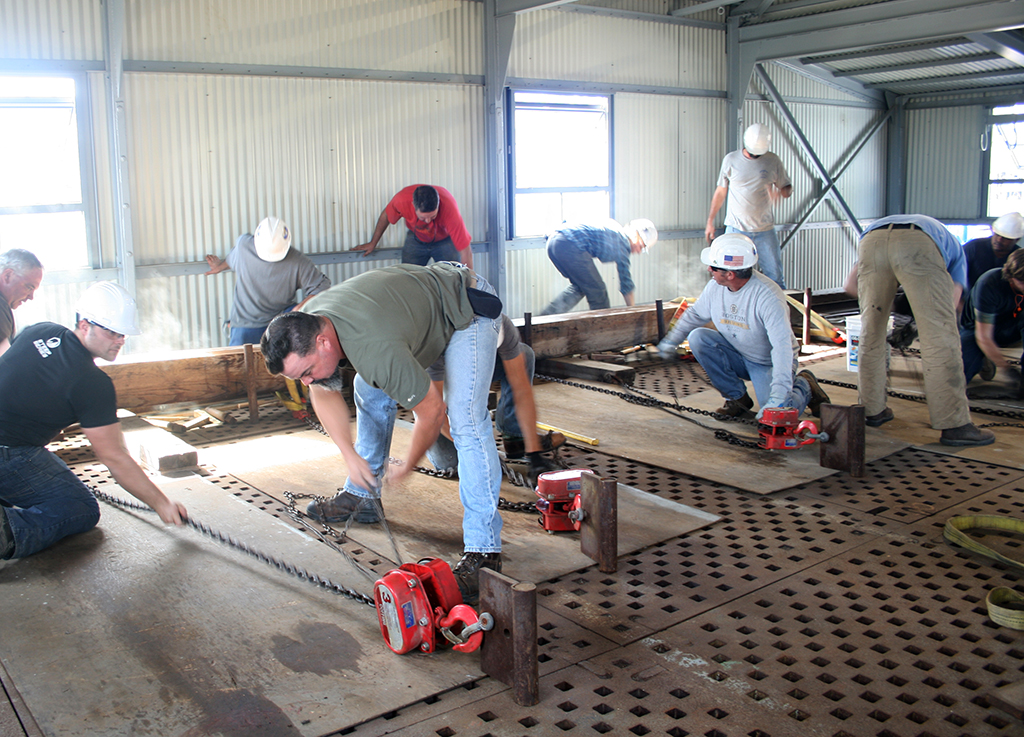![[USS Constitution Museum Collection. 1742.1]](/wp-content/uploads/2015/10/1742-1_010.jpg)
There were no lumber yards 200 years ago, so when the naval constructors and shipyards were assigned the task of building six frigates to begin the United States Navy, axe-men and ship carpenters were sent into the forests of New England, the Mid-Atlantic states, and the sea island off Georgia “to fell and form by pattern moulds” [New London Connecticut Gazette, 26 June 1794] the best white and live oaks for the hull.
Trees were not just randomly cut down in the forest. The “moulds” or wooden patterns of specific structural ship parts were used to guide the selection of the appropriate trees. As illustrated in a plate from Peter Guillet’s Timber Merchant’s Guide (1823), the trees selected for planks had to be tall and straight with few branches. The plate also indicates the preferred dimensions of the stock, with the smallest plank measuring a minimum of 35 feet in length and largest at 60 feet in length.
There are very few straight angles on a vessel. Therefore, the hull planking cut from the white oak trees must be bent into the appropriate shapes to fit the ship’s curves. Below is a 20th century copy of Joshua Humphreys’ 1794 “Sheer Half-Breadth and Body” plan of the 44-gun frigates. The plan illustrates the extreme curves of the ship’s bow. Today, the exterior white oak hull planking is steamed and bent to create these curves.
![[Courtesy Naval History & Heritage Command Detachment Boston]](/wp-content/uploads/2015/10/14925-_Page_2_edit.jpg)
It was thought prudent to contrive some method of seasoning and salting the white oak stuff, above light water, to assimilate it, as near as possible, with live oak and red cedar, in point of duration, and at the same time facilitate the bending of them on the round parts of the ships. A trunk long enough to take the longest timber in, with three large iron plates in each, at equal distance, and a simple air furnace, under each plate, to boil the salt and water, which will penetrate any timber put into it, was considered the least expensive and most useful. [American State Papers, Vol. 1, page 9.]
The “trunk” was a large wooden box up to 70 feet long and six feet wide into which the plank would be submerged. Iron plates were heated via a furnace and boiled the salt water within the trunk. In his recommendation, Humphreys noted that this method of “boiling” the white oak would render it flexible. This would allow the plank to bend to fit the extreme curves of the ship’s bow and stern.
For the last two restorations, the Naval History & Heritage Command Detachment Boston ship restorers have used an iron steam box and steam house to bend the white oak hull planks. The photograph below shows the granite 1847 building which is the home of the Detachment Boston. The corrugated metal building is the steam house with the iron steam box projecting from the back. When it comes time to bend a white oak hull plank, 300 degree Fahrenheit steam is pumped into the box where it cools to 250 degrees. The general rule of thumb when steaming white oak is that it takes one hour of steaming for every one-inch thickness of the plank. Therefore, a five-inch thick plank takes approximately five hours of steaming for it to become pliable.
![[Courtesy Naval History & Heritage Command Detachment Boston]](/wp-content/uploads/2015/10/IMG_5627.jpg)
![[Courtesy Naval History & Heritage Command Detachment Boston]](/wp-content/uploads/2015/10/IMG_5456.jpg)
![[Courtesy Naval History & Heritage Command Detachment Boston]](/wp-content/uploads/2015/10/IMG_5658.jpg)
![[Courtesy Naval History & Heritage Command Detachment Boston]](/wp-content/uploads/2015/10/IMG_5670.jpg)
![[Courtesy U.S. Navy. Photo by MCSN Victoria Kinney]](/wp-content/uploads/2015/10/150917-N-XP344-085.jpg)
![[Courtesy Naval History & Heritage Command Detachment Boston]](/wp-content/uploads/2015/10/IMG_5735.jpg)
The Author(s)
Margherita Desy, Historian, Naval History and Heritage Command Detachment Boston
Historian, Naval History and Heritage Command
Margherita M. Desy is the Historian for USS Constitution at Naval History and Heritage Command Detachment Boston.
Kate Monea
Manager of Curatorial Affairs, USS Constitution Museum
Kate Monea is the Manager of Curatorial Affairs at the USS Constitution Museum.
